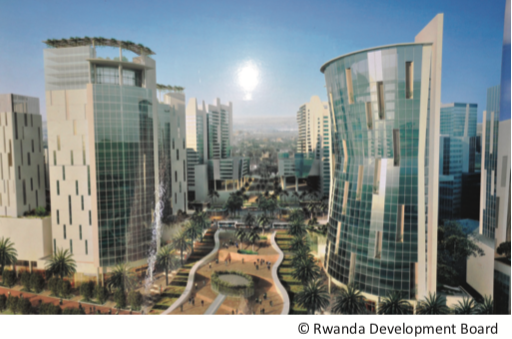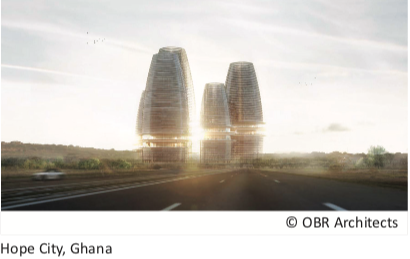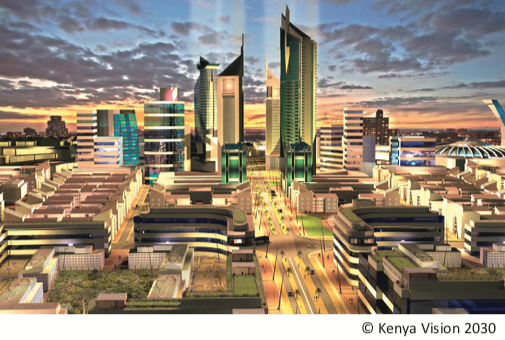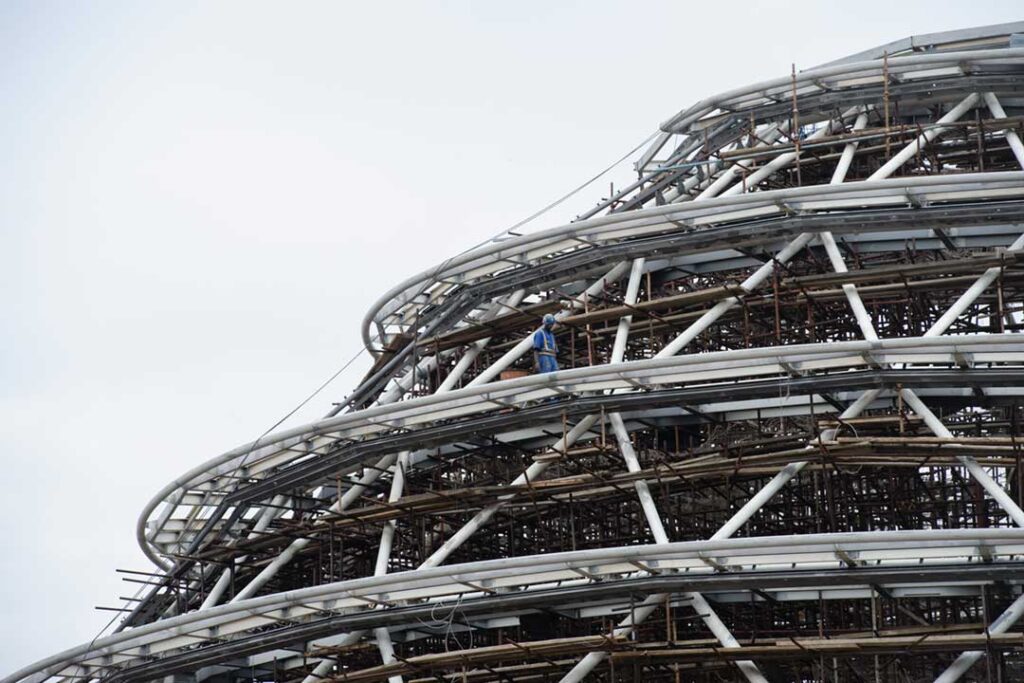What is in store for African cities?
Foreign-born development fantasies will make African cities a nightmare
African cities have become the world’s next property investment frontier in the post-2008 economic climate. International architects and property developers are scrambling to sell fantastical visions of new satellite cities, or in some cases entire city makeovers, to short-sighted governments.
The designs for some of Africa’s largest cities, dubbed “world-class cities”, “smart cities” and “eco cities”, are accompanied by artistic renderings suggesting visions of Dubai, Singapore or Shanghai. For instance, the plans by US-based Oz Architecture for Rwanda’s capital, Kigali, ignore the city’s large informal urban population. A proposed new satellite city near Nairobi, Kenya (see page 9), designed by New York-based SHoP Architects, promises a modernised and sanitised living environment for the middle classes.
These smaller, mostly independent urban areas are far removed from the squalor and congestion of existing cities. Hope City, just east of Accra, Ghana’s capital, designed by Italian architect Paulo Brescia, is no different. African beehives inspired its large, linked buildings that contain all the facilities needed for residents and workers, thus eliminating the need to venture outdoors.

Other cities are expanding by filling in land to create new urban extensions. Kinshasa, capital of the Democratic Republic of Congo, is one of Africa’s largest and poorest cities. Here in 2009 developers began filling the Congo River to support up-market retail and residential buildings, a process which destroyed the livelihoods of many small farmers along the river’s banks.
In Nigeria, the Lagos state government and South Energyx, a private engineering and construction firm, are creating “Eko Atlantic”, a 10-square-kilometre artificial island off the coast of Lagos, the country’s economic capital, where some 250,000 people can live and work away from the city’s congestion and pollution. When the project began in 2012, the Nigerian government demolished the floating shacks of the Makoko neighbourhood and left many residents of this fishing community homeless.
Do these new developments represent the “modernisation” of African cities? Should we be concerned about them? Yes, mostly because these urban plans ignore the realities of African cities and in many cases would directly worsen current conditions. Full city “make-overs”, such as the plan for Kigali, are leading to the removal of slum dwellers from central urban districts where income-generating opportunities and public services are concentrated.

Most of Africa’s urban population is desperately poor. Some 61% of sub-Saharan Africa’s urban population live in slums and 61% survive on the informal economy, according to a 2010 report by UN-Habitat, the United Nations agency for human settlements. With a 3.9% average annual urban growth rate, a further 150m people could reside in Africa’s urban areas, especially in secondary cities, by 2020, according to 2012 figures from the UN’s population division. Unless state resources and energies are focused on meeting the basic needs of the urban poor (sanitation, clean water, shelter, public transport) and on city plans that are inclusive and supportive, Africa will be facing an urban crisis of huge proportions.
Satellite city and urban infill projects will inevitably divert state funding for new infrastructure away from basic needs provision. A long history of satellite city planning in other parts of the world shows the difficulty in creating new self-sufficient urban areas: they rely on large and on- going government subsidies and worsen traffic congestion by generating large movements back to the “mother” city for work and higher-order public services.

The market in African cities for the high-end, luxury apartment and office blocks portrayed in these fantasy plans is very limited. Companies like Deloitte point to a rapidly-growing urban middle class, currently defined as those spending only $2-$20 a day, as cited in a 2011 African Development Bank report.
A good example of this supply and demand mismatch is the new satellite Kilamba City, a Chinese-built “ghost town” outside Luanda, Angola. New apartments here cost between $120,000 and $200,000, unaffordable even for senior civil servants, according to architect and planner Allan Cain in a study published in 2014 in the journal Environment and Urbanization. Kilamba City, completed in 2012, stood empty for a year. Eventually, the state was obliged to lower apartment costs through major subsidies, which used up the bulk of the national housing budget, according to Mr Cain’s study.
The “smart” and “eco” labels, often attached to these fantasy cities, are also suspect. While the principles underlying them may be supportable, these terms are often misused in the interests of urban boosterism.
Truly smart cities require much more than information technology and infra- structure. Social capital, the networks and shared values that encourage social co-operation and which are needed for innovation, is equally important. These urban plans of- ten do not specify how they will be achieved. Sustainability principles are important in any new urban development, but the fantasy plans with their glass-box towers, swathes of landscaped lawn and freeways suggest the opposite.

These labels are also often used to justify urban projects that avoid consultation and participation with city residents. For example, the development of Konza Techno City, a new satellite city 60km south-east of Nairobi in Kenya, has stalled as local landowners dispute consultation and compensation processes. Eko Atlantic has also moved ahead without public participation, according to several reports.
The implementation of these fantasy plans depends on local and national government support. African governments should be demanding ideas that are appropriate to the problems and issues which cities face, designs that would improve the lives of a majority of a city’s residents and are not skewed to the imagined desires of a very small urban elite.
The direct impact of most of the utopian plans will be to further segregate cities into areas for the wealthy and highly skilled and areas for the poor and unemployed. They aim to allow the urban middle classes and foreign and local investors to escape the “crime and grime” of African cities. While this desire is understandable, it is dangerous and short-sighted because it creates the illusion of progress while leaving more pressing problems unaddressed.



